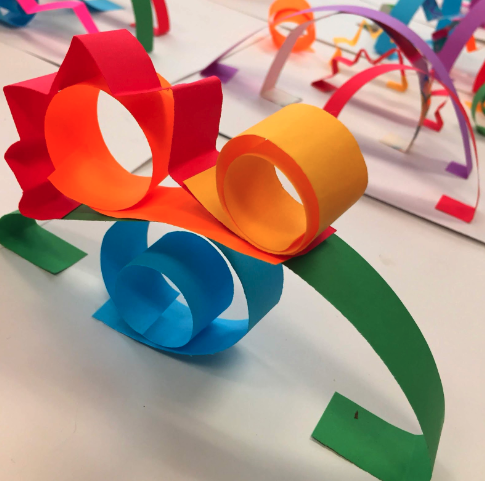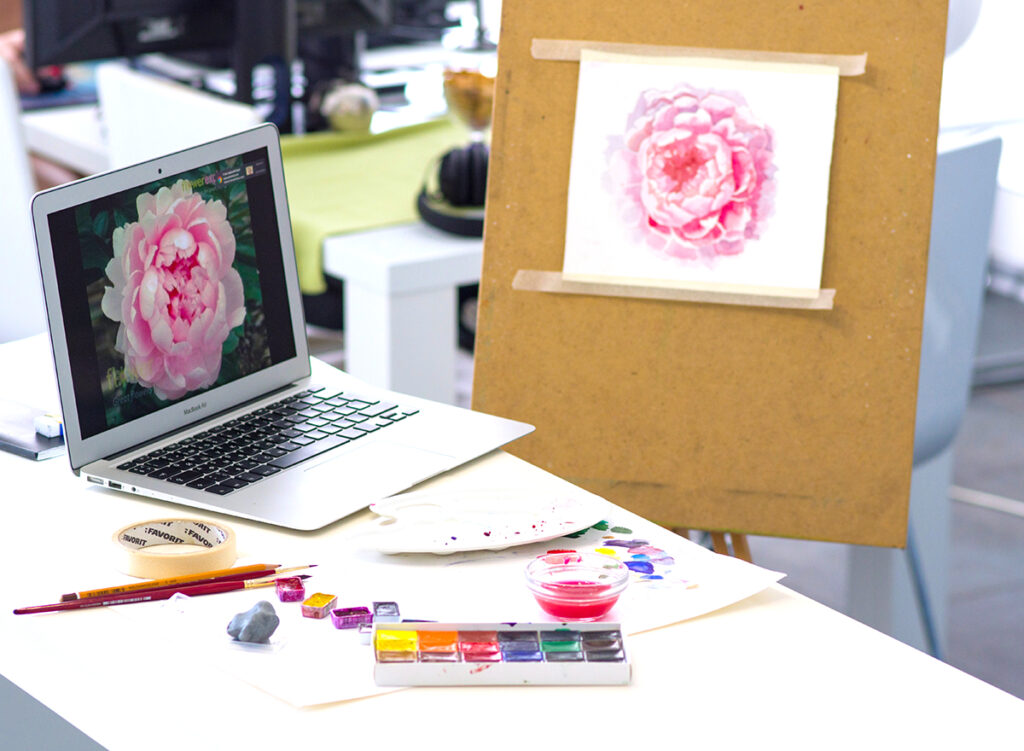Master Your Mediums: A Guide for Oil Painters: PART I of II

The subject of what mediums to use for oil painting causes so much confusion to oil painters of all levels! In this two-part blog post I offer some clarity on the subject to help you decide if and when and which mediums to use in your oil paintings.
This post got so long I had to split it into two parts! In Part I I discuss oil mediums, solvents, the “fat over lean” principle, and a list of mediums I do NOT recommend.
In Part II I’ll share how to achieve a wide range of transparent glazing and opaque impasto (texture) effects, and finally, I’ll share the mediums I now use. Read Part II here.
What is a medium and why do you need it?
Oil paint can be somewhat stiff and thick as it comes right out of the tube, so many oil painters add mediums to their paint. Mediums can significantly alter the behavior of oil paint, whether to increase flow, add texture, increase transparency, or change the drying time. The many options can feel overwhelming, so we’ll start with the basics and get to the more complicated ones later.
Oil as Medium

Oil is the most basic medium. It’s simple and reliable: Since oil paint is already made with oil, you can be sure you are not adding too many ingredients to your paint, which can have unexpected results. However, it’s possible to add too much oil, and in general you should add as little as possible to your paint.
Oil can be mixed into the paint on your palette with your brush or with a palette knife. You can also spread a thin layer of oil paint directly on your canvas. Spreading a thin layer of medium directly on your canvas or on a dried layer of your painting is called a couch, and it makes the paint easier to apply and spread.
I like to use a makeup sponge to apply the couch, and then I flip the sponge over and use the dry side to soak up any extra oil, so the oil layer is as thin as possible. Using too much oil can lead to an unstable painting long term. If there are not enough pigment particles to stabilize it, a layer of oil can continue to “move” (at the molecular level) over the course of many years, causing the paint layers to eventually wrinkle.
Oil medium makes the paint flow more easily, and also allows it to be spread thin for increased transparency. Oil does not hold brush strokes well, however, so it’s best for areas you want to remain thin, flat, and texture-free, like dark backgrounds.
Types of Oil

There are several types of oil that can be used to create oil paint or mix into oil paint as a medium, but I prefer linseed oil, or stand oil. Stand oil is actually linseed oil that has been processed to become thicker. Historically stand oil was just linseed oil set to stand in the sun for a period of time to thicken it.
The drawback of linseed (and stand) oil is that it can yellow a painting that is left in the dark. However, it bleaches back to clear if the painting is left in the light for just a few days. Since linseed oil creates the strongest film once it has dried, paintings done with linseed oil have survived hundred of years and look as if they were painted yesterday. Yellowing is a real problem for old oil paintings, but historically the issue of yellowing has been attributed more to using resin-based varnishes, either as a final protective coating, or mixed into the paint.
There are several other kinds of oil that can be used in oil painting:
Safflower oil is sometimes used when making white paint, because it is less yellow than linseed oil. Be sure to check your tubes to be sure what kind of oil is in your white pigments. However, safflower oil is not as strong as linseed oil when dry. Walnut oil is the most “white” or clear painting oil, and there are some brands of paint that mix every color with only walnut oil for this reason. Poppyseed oil is also considered a very clear “white” oil.
But both poppyseed and walnut oil take much longer to dry than linseed oil, which is a significant consideration if you paint multi-layered “indirect” oil paintings. Also, walnut and poppyseed oils are not as strong when dry, and therefore may not be as stable long-term as linseed oil.
I prefer to work with linseed oil because it cures to a strong, stable film, and it dries at the right speed: fast enough that you can paint on top a thin layer in just a few days, but slow enough that it stays “open” and workable for a good six-hour painting session.
Oil-Based Medium Recipes
Lean Oil Medium: 2 parts linseed oil to 1 part odorless mineral spirits
This is a thin, lean medium that is best to use in the first layers of an oil painting.
Fat Oil Medium: 1 part linseed oil to 1 part stand oil
This is a thicker medium that works well for painting fine details in the final layers of color over previously dried layers.
I have a mixing mediums video on YouTube that shows how I use small jars to mix these mediums.
These are the mediums I have used for many years, however the risk for oil mediums is using too much oil, and so I have recently switched to a new medium, which I’ll discuss below.
Fat over Lean
The phrase “fat over lean” is catchy and easy to remember, but it can be confusing to understand and implement. The main thing to think about is drying time: The top layers of a painting should dry slower than the lower layers. You don’t want lower layers still wet and “moving” after the top layer has cured, because that can cause your painting to develop cracks.
Many factors can affect drying time: Different oils and mediums dry at different rates, and drying time is also also affected by the proportion of oil to pigment. Different types of gesso grounds affect the paint drying time, and even different pigments dry at different rates. So judging drying rates is complicated: Stand oil, which is used in higher proportions in later stages of an indirect painting, dries faster than linseed oil. But the final details of a complex painting often require a whole day of painting in just one small area of the painting, whereas for earlier, leaner layers the whole painting is often covered in just one session. The chalk gesso ground also absorbs a lot of oil and increases drying speed for lower layers. This means the lower layers are getting plenty of time to dry as an indirect painting progresses, so the base layers are very stable by the time the final “fat layers” of fast-drying stand oil cover the surface of the painting.
In general, to make a stable multi-layered, indirect painting, keep early layers thin by scrubbing them on with a bristle brush, almost like drawing with charcoal. Use as little oil as possible, and try to only use fast-drying, hard-curing pigments for under paintings, like umber colors and lead white.
Climate can also make a big difference for drying time: If your studio is very cold, or very humid, oil paintings will be slow to dry. A warm, dry atmosphere is best for oil painting.
Oil Medium Safety
Oil mediums are very safe for personal and environmental health. They don’t give off fumes, and since they are made from edible seeds and nuts, they are not toxic to handle.
The only health danger with linseed oil is it can heat up as it dries and is well-known to start studio fires, so it’s best to throw away any oil-soaked rags in a certified fire-proof can with a heavy lid. I like to pour a little water over them as well for added peace of mind.
Cooking Oil?
Although painting oils may seem similar to cooking oils because they are made from seeds and nuts, cooking oil is not suitable for oil painting. The reason is, cooking oils like vegetable oil, olive oil, and corn oil, are non-drying: If you were to spill a little cooking oil on your counter and leave it there for days or even weeks, it may get sticky, but it would never solidify! The whole point of oil paint is that it must cure to a very hard solid. Some artists do leave their brushes soaking overnight in cooking oil to avoid using solvents to clean them, but if you do that you must wash the cooking oil out of the brush very thoroughly to avoid it getting into your paint.
Solvents

Solvents are thinners that are used to dissolve paint. Solvent is used to clean brushes, but it can also be used as a medium itself, or mixed into other mediums.
Historically artists used turpentine or mineral spirits for their solvent, but the fumes are very strong. Most artists today use odorless mineral spirits, or OMS, which are NOT “non-toxic” no matter what the packaging says, but the fumes are far less noticeable. Many oil painters today are experimenting with eliminating solvents completely from their studios. I personally do use odorless mineral spirits, but in very small amounts..
It’s possible to use solvent as a medium. It will increase flow, transparency, and speed up drying time. Many artists use it as the medium for their base layer, particularly for alla prima (single-session, wet-in-wet painting) and plein air (outdoor) landscape painting. However, it’s important to understand that any solvent is essentially dissolving the paint, which means it is degrading the strength of the paint film. If you use too much solvent, the oil may be too degraded to properly bind the pigment particles. I often add at least a little linseed oil to my solvent if I am using it as a medium.
Mediums I Don’t Use

I prefer to keep all the ingredients in my oil painting very simple. Oil paint at the most simple level is essentially hard particles suspended in a single liquid that cures to a hard solid. I like my mediums to emulate that simplicity. I do not use nor recommend mediums that contain varnishes or resins, and I simply prefer not to use mediums with dryers or alkyds.
These are some common mediums and ingredients I don’t use:
Dammar Varnish or “Retouch” Varnish
A medium recipe of equal parts oil, solvent, and dammar varnish is often taught in art schools and ateliers, but mixing varnish into your paint layers can cause serious problems long-term. The reason is, varnish is easily dissolved by solvent. That’s why it is often used as a final protective coating over a fully dry painting: It is designed to be removable and replaced by future conservators when the painting needs to be cleaned or repaired. Conservators can wipe varnish off a painting without harming the painting. However, if there is varnish mixed into the paint, or applied between layers of oil paint, the paint can be damaged by solvents. “Retouch varnish” is also not recommended: Since it can be dissolved with solvent, it weakens your painting.
Dammar varnish is also well-known to yellow very quickly, even within a human lifetime. But even modern synthetic varnishes that remain clear should not be mixed into the paint or applied between layers.
NOTE: You can see my dammar bottle is half-empty and well-used, and you’ll also see dammar varnish listed on my Indirect Painting Materials list and in my YouTube video for mixing mediums in jars. This is why: I only use it as an isolating layer. Indirect painting is done on a smooth chalk-gesso panel, with a graphite line drawing transferred onto it. Historically, shellack or varnish were used to seal a chalk gesso ground, because the ground is very “thirsty” and will absorb all the oil out of your paint. I have found that dammar varnish thinned with solvent is the perfect mixture to seal the chalk ground and isolate the graphite line drawing. I then apply 10 or more layers of oil paint, allowing each layer to dry, to create my highly detailed indirect oil paintings. I feel due to this process, there is no danger of the dammar varnish adversely affecting my final painting.
Spike Oil or Lavender Spike Oil (a solvent)
Despite the name, spike “oil” is actually a solvent. It is being heavily marketed recently as a healthy alternative to mineral spirits/turpentine. I believe it’s fine to use in oil painting, and probably healthier for you and the environment. I do love the smell, but it is very strong, and some people hate it – including my husband. Aside from that, the only reason I don’t use it is because it doesn’t work well as a brush cleaner: The paint doesn’t settle to the bottom of the jar, so you can’t pour off the clean solvent to re-use it the way you can with odorless mineral spirits. This makes it very expensive and wasteful, because you need to replace large amounts frequently. Since using solvent as a brush cleaner has far more impact on the fumes in the studio than the tiny amount you use in a medium, it doesn’t really help to make my studio solvent-free if I can’t use Spike as a brush cleaner, so I don’t bother to use it in my mediums.
Liquin and Galkyd
Both these alkyd-based mediums speed up the drying time for oil paint to just a few hours, so many plein air and alla prima painters like them. But alkyd has very strong smell I don’t like. Since I can get the same glazing effects with non-alkyd mediums, I don’t feel a need to use Liquin or Galkyd. I’m also unsure whether there are other “mystery ingredients” mixed into these highly processed, mass-produced mediums.
Maroger
Many artists love the properties of Maroger, because it works for both transparent glazes and also can be “piled up” to create thick texture. I’ve tried it, and it’s enjoyable to work with, but I didn’t like the look of the impasto (thick texture) areas once the painting dried. When I look at historic paintings with thick impasto like those of Rembrandt or Velazquez, the texture looks almost gritty: Very opaque, dry, and with crisp ridges; almost like the rocky surface of a cliff in miniature. But Maroger impastos look very different: They look shiny and gelatinous, almost translucent. Since Maroger also has some question as to how it holds up long-term, and it was only invented in the early 20th century and dubiously touted as the “secret medium of the Old Masters” without much evidence, I don’t feel the risk is worth it’s admittedly lovely handling properties.
In Part II I discuss the mediums I DO use and recommend, and I also answer a bunch of questions I got on social media about mediums. Read Part II here.
I’ll be sharing more about using mediums when I release my new painting video course later this year: Glazing and Scumbling a Still Life with ROSES. My online video course Glazing and Scumbling is a great introduction to the techniques I’ll be sharing in the more advanced Roses course.
I teach Alla Prima, Direct, and Indirect oil painting here online, offered as fully pre-recorded video courses you can watch any time, including my Intro to Oil Painting which is perfect for beginners. I also offer mentorship programs if you want help and support while working through the courses.





